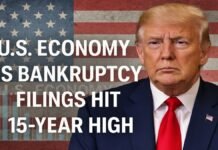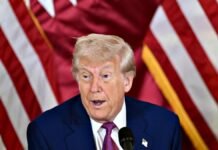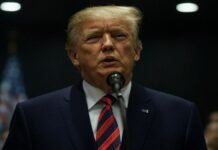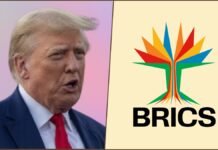
Key Points
- China’s GDP grew by 5.2% in Q2 2025, outpacing analyst expectations and surpassing the government’s 5% target, despite major trade headwinds and US tariffs.
- Quarterly growth reached 1.1%, signaling continued resilience amid global economic turbulence.
- Robust domestic investment in infrastructure and advanced manufacturing and strategic export rerouting powered GDP gains.
- Record US tariffs (up to 145%) had a significant but not crippling effect; export flows to the US rerouted via Southeast Asia helped offset losses.
- Government stimulus consumer subsidies for electric vehicles, appliances, and housing bolstered consumption and factory output.
- Oxford Economics and major institutions have revised upward their full-year China growth forecasts.
New Delhi: China has again surprised global financial markets by posting better-than-expected GDP growth amid the most acute US-China trade tensions in years. In the April–June 2025 quarter, China’s economy expanded by 5.2% year-on-year, beating consensus forecasts of around 5.1%. While this marks a slowdown from the previous quarter’s 5.4%, it demonstrates significant resilience under pressure from steep US tariffs and worldwide economic uncertainty.
Quarterly Momentum:
China’s GDP increased by 1.1% compared to the previous quarter (Q1 2025), reflecting steady underlying momentum. Through the first half of 2025, overall GDP growth stands at 5.3%, keeping the country on track to meet and likely exceed the official annual growth target.
What’s Driving China’s Economic Strength?
- Industrial Recovery and Infrastructure Boom:
Major investments in high-speed railways, advanced manufacturing, and critical infrastructure have buttressed industrial output. June’s industrial production jumped 6.8% year-on-year, outpacing expectations and supporting jobs and export growth. - Stimulus and Consumer Incentives:
The government rolled out broad subsidies for electric vehicles, appliances, and housing. This consumption push invigorated factory production and helped absorb excess capacity built up during pandemic and early trade war years. These measures have been so popular that local budgets in some regions were strained by demand, underscoring high policy impact. - Export Rerouting and Trade Strategy:
Even as direct exports to the US shrank under tariff hikes, Chinese firms increased shipments through Southeast Asia and other third countries, then re-exported to key markets, cushioning the tariff shock. Exports to Europe and India also remained solid. A mid-May truce between Washington and Beijing, with tariffs reduced but not eliminated, further stabilized trade flows. - Solid Services Growth:
The tertiary (services) sector regained its role as the fastest-growing part of China’s economy in Q2, aided by policy support and recovering consumer demand.
The US-China Trade War: Tariff Timeline and Economic Impact
| Event/Stat | 2025 Highlights |
|---|---|
| Max US Tariff on China | 145% in April; scaled back to 30% by late May |
| Export Flows | Shifted via Southeast Asia, aiding US/EU shipments |
| Property Investment | Still a weak spot, down 11.2% YoY Jan–June |
| Fixed Asset Investment | Up 2.8% Jan–June, below expectations |
Intensified tariffs sent global supply chains scrambling, but efforts at trade rerouting and subsidies shielded China’s growth. Analysts warn of persisting headwinds especially for real estate and retail sales, which have lagged in recent months.
Analyst Upgrades and International Reactions
- Oxford Economics and other forecasters have raised China’s 2025 GDP growth estimates from 4.3% to as high as 4.7% on the strength of Q2 data.
- The World Bank and IMF caution that global growth forecasts remain tepid, in part due to trade turbulence, but acknowledge China’s outperformance as a stabilizing factor.
- American media and experts admit that China’s ability to beat official targets despite tariffs as high as 145% has upended predictions of an economic stumble and reinforced its status as a global growth engine.
Conclusion: China’s Growth Resilience Defies Tariff Pressures
Despite an unforgiving environment characterized by one of the sharpest trade wars in history and global slowdown fears China’s economy is powering ahead. Strategic investments, agile trade tactics, and aggressive policy support have kept growth above expectations, with Q2 2025 figures sending a strong message of stability to global markets. Yet, policymakers are aware that challenges remain, especially if the trade war reignites or domestic stimulus loses steam. For now, China’s economic momentum stands as a bright spot in an uncertain world.

















































